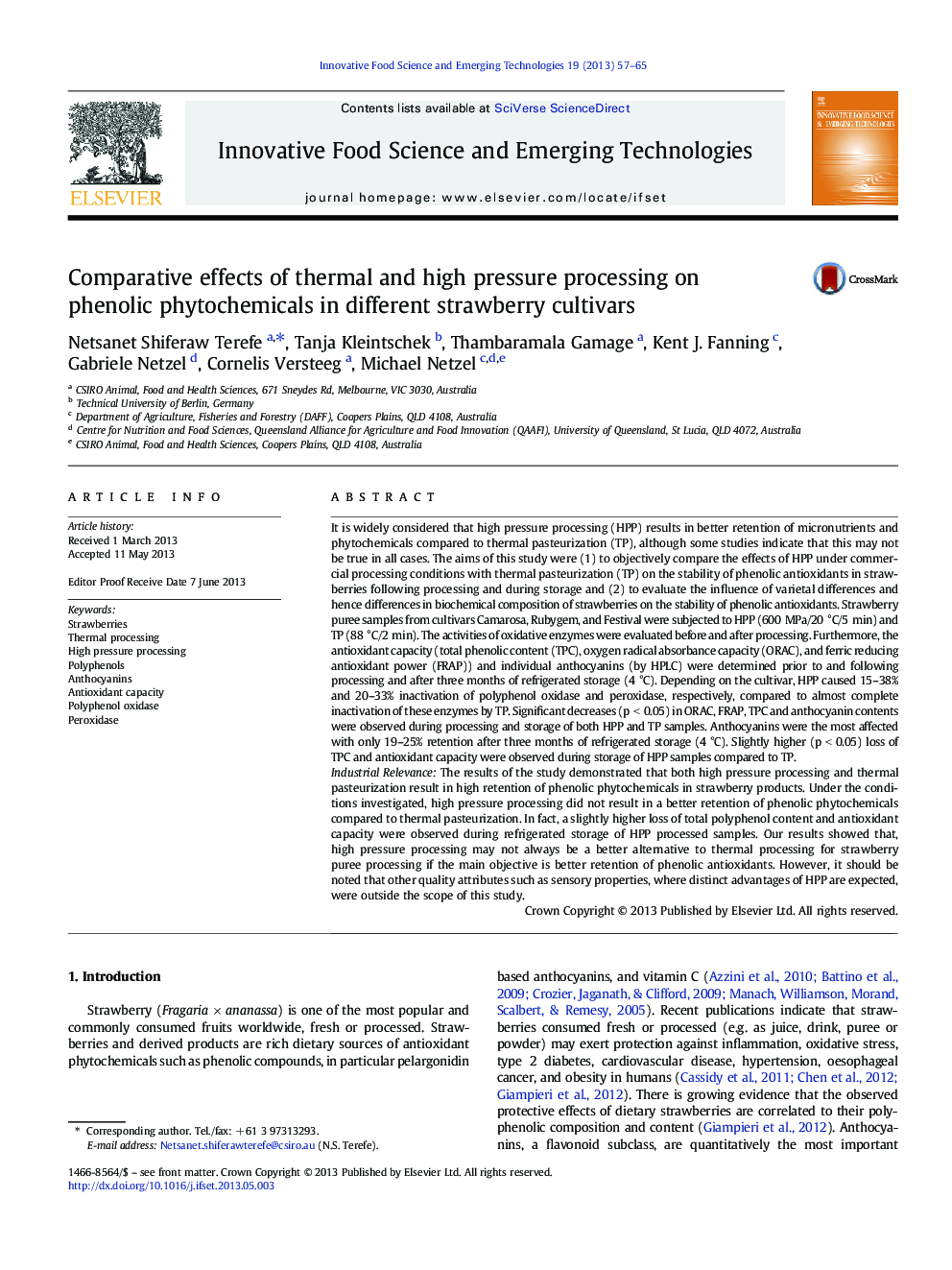| کد مقاله | کد نشریه | سال انتشار | مقاله انگلیسی | نسخه تمام متن |
|---|---|---|---|---|
| 2086860 | 1545547 | 2013 | 9 صفحه PDF | دانلود رایگان |

• Processing impact on strawberry polyphenols was investigated.
• Slight reduction (~ 20%) by high pressure (HPP) and thermal processing (TP)
• No significant difference between HPP and TP impacts on polyphenols
• Storage (3 months, 4 °C) had the highest impact (~ 60% anthocyanin degradation).
It is widely considered that high pressure processing (HPP) results in better retention of micronutrients and phytochemicals compared to thermal pasteurization (TP), although some studies indicate that this may not be true in all cases. The aims of this study were (1) to objectively compare the effects of HPP under commercial processing conditions with thermal pasteurization (TP) on the stability of phenolic antioxidants in strawberries following processing and during storage and (2) to evaluate the influence of varietal differences and hence differences in biochemical composition of strawberries on the stability of phenolic antioxidants. Strawberry puree samples from cultivars Camarosa, Rubygem, and Festival were subjected to HPP (600 MPa/20 °C/5 min) and TP (88 °C/2 min). The activities of oxidative enzymes were evaluated before and after processing. Furthermore, the antioxidant capacity (total phenolic content (TPC), oxygen radical absorbance capacity (ORAC), and ferric reducing antioxidant power (FRAP)) and individual anthocyanins (by HPLC) were determined prior to and following processing and after three months of refrigerated storage (4 °C). Depending on the cultivar, HPP caused 15–38% and 20–33% inactivation of polyphenol oxidase and peroxidase, respectively, compared to almost complete inactivation of these enzymes by TP. Significant decreases (p < 0.05) in ORAC, FRAP, TPC and anthocyanin contents were observed during processing and storage of both HPP and TP samples. Anthocyanins were the most affected with only 19–25% retention after three months of refrigerated storage (4 °C). Slightly higher (p < 0.05) loss of TPC and antioxidant capacity were observed during storage of HPP samples compared to TP.Industrial Relevance: The results of the study demonstrated that both high pressure processing and thermal pasteurization result in high retention of phenolic phytochemicals in strawberry products. Under the conditions investigated, high pressure processing did not result in a better retention of phenolic phytochemicals compared to thermal pasteurization. In fact, a slightly higher loss of total polyphenol content and antioxidant capacity were observed during refrigerated storage of HPP processed samples. Our results showed that, high pressure processing may not always be a better alternative to thermal processing for strawberry puree processing if the main objective is better retention of phenolic antioxidants. However, it should be noted that other quality attributes such as sensory properties, where distinct advantages of HPP are expected, were outside the scope of this study.
Journal: Innovative Food Science & Emerging Technologies - Volume 19, July 2013, Pages 57–65